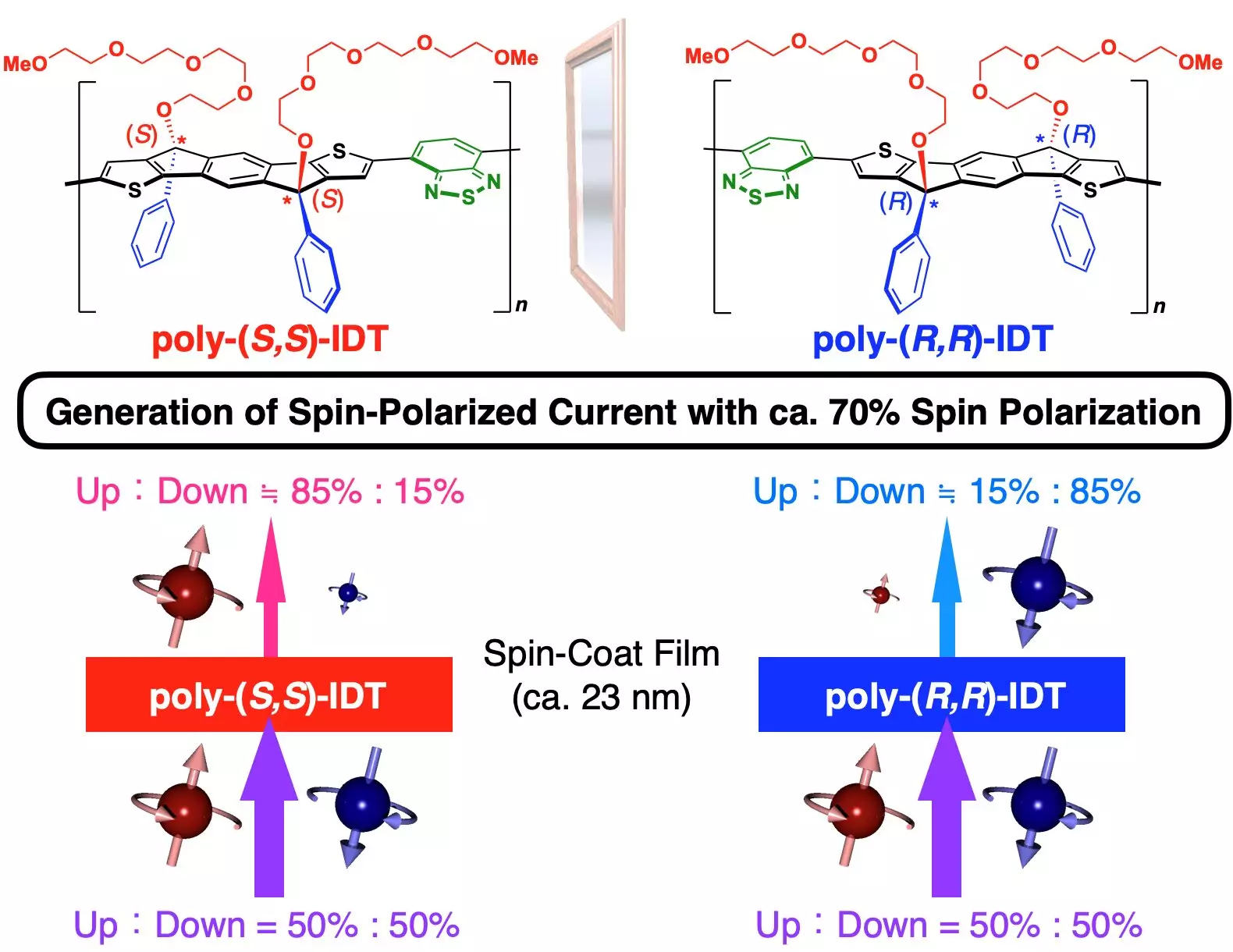Chirality is a fundamental property of certain molecules, where the spatial arrangement of atoms allows for two mirror-image configurations, often referred to as “left-handed” and “right-handed” forms. Even though these molecules share the same atomic composition, their unique structures lead to disparate interactions with external stimuli, particularly light and electrical currents. This intrinsic difference, underlined by the phenomenon known as chirality-induced spin selectivity (CISS), has significant implications in the rapidly evolving field of spintronics—a domain that harnesses not just the charge of electrons but also their spin.
Recent research from Osaka University showcases a promising advance in this field, focusing on the development of chiral copolymer films with remarkable spin polarization properties. The research team led by Shuang Li synthesized a chiral indacenodithiophene (IDT) derivative that serves as a monomer unit in creating these copolymers. By constructing polymers with chiral backbones, they have endowed these films with the capacity to act as effective spin filters—a novel capability that differentiates them based on the polarization of incoming electrical currents.
The synthesis of such polymers has often been a complex and laborious process. However, the IDT copolymer films developed in this study presents a more streamlined method via spin coating. This simple fabrication process not only enhances the feasibility of production but also paves the path for practical applications in the emerging field of spintronics.
Measuring Spin Polarization Effectively
To assess the spin polarization effects of the IDT copolymers, the researchers meticulously employed an atomic force microscope. By orienting the microscope’s metal cantilever in either up or down polarization orientations with a neodymium magnet, the copolymer films were subjected to polarized currents, allowing the team to observe distinct behaviors dependent on magnet-induced polarization directions.
The results were striking: the spin polarization levels reached nearly 70%, marking a significant achievement within this domain. The ability to quantify and harness such high levels of spin polarization has the potential to revolutionize spintronic devices, enhancing their capability and efficiency considerably. Fumitaka Ishiwari, a senior author of the study, emphasized that their findings could inspire further innovations in basic electronic device operations leveraging the properties of chiral materials.
The research conducted at Osaka University not only contributes to the academic understanding of chirality and its practical implications but also signals a potential leap toward real-world applications. These advancements in chiral copolymer films could be particularly crucial for clean energy technologies, where spin-polarized currents may lead to more efficient energy storage and transfer mechanisms.
As the field of spintronics continues to mature, encouraging results such as those produced from the IDT copolymers indicate a promising future where the intrinsic properties of molecules can be harnessed to create advanced electronic technologies. With ongoing research, one can anticipate further breakthroughs that capitalize on chirality’s unique characteristics, ultimately leading to the development of next-generation electronic devices that are more efficient, reliable, and environmentally friendly.


Leave a Reply